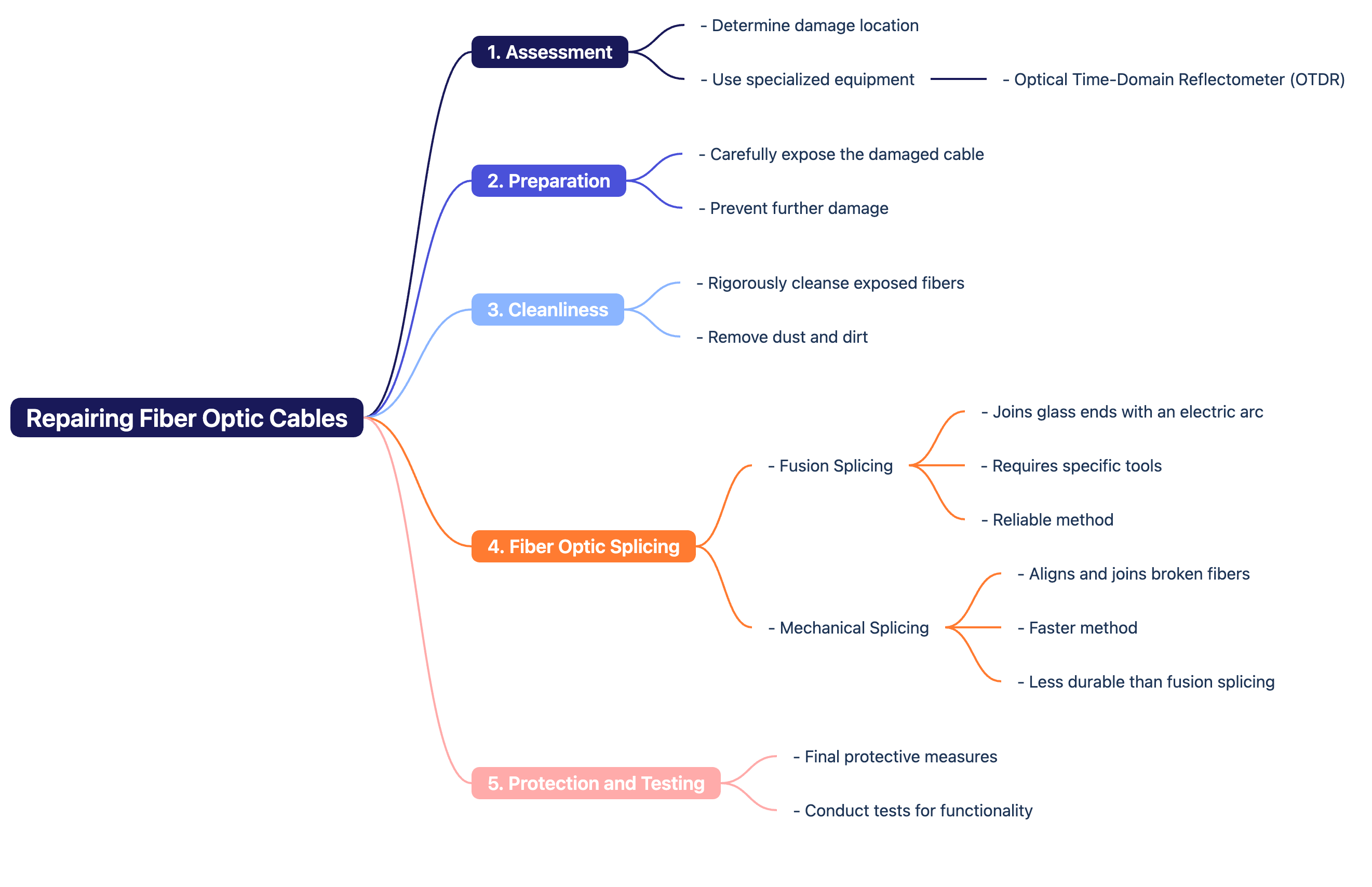Just like the internet’s nervous system, fiber optic cables transport data at lightning-fast speeds. What then occurs when these fragile lifelines are suffering damage? Can fiber optic cables be repaired? The quick answer is yes; but, let’s look further into the process of repairing a fiber optic cable, the challenges involved, and some useful advice for maintaining these important connections.
Think about your fiber optic cable as a thread made of glass or plastic, thinner than human hair but remarkably powerful in delivering large volumes of data. Still, it is fragile, just like a delicate thread is. There are some typical reasons of fiber optic cable damage
1. Physical Stress: accidental cuts in renovations or construction.
2. Extreme weather, flooding, or strong winds can all damage underground or aerial fiber optic cables.
3. Rodent Damage: Indeed, even animals can chew on these essential cables.
4. Bending or Kinking: Excessive bending or incorrect handling can result in small fractures.
So what happens next when these critical cables are damaged? Repairing a broken fibre optic cable necessitates precise care and experience. Here’s a simple guide on how professionals repair fiber optic cables:

1. Assessment
The first step is to determine the precise location and scope of the damage. To locate the break, fiber optic cable troubleshooters use specialized equipment such as an Optical Time-Domain Reflectometer (OTDR).
2. Preparation
Once discovered, the damaged fiber optic cable is carefully exposed. Handling the fiber carefully will help to prevent more damage.
3. The cleanliness
The exposed fibers are rigorously cleansed to remove any dust or dirt that may obstruct the mending process.
4. Fiber Optic Splicing
There are two main ways to fix a broken fiber optic cable: one is fusion splicing. A technique for joining the glass ends of a fiber with an electric arc. It depends on specific tools but is dependable. Another is mechanical splicing. This method includes aligning and joining broken fibers using a mechanical splice, which is faster but less durable than fusion splicing.
5. Protection and Testing
After splicing, the repaired piece is protected with a splice protection sleeve or enclosure. The next step is to test the repaired part to ensure that data transmission runs smoothly and efficiently.
Fiber optic cable repairs are not like walking in a park. It presents multiple difficulties.
1.Precision: Given the small size of fiber optic strands, accuracy is critical.
2.Environmental Conditions: Outdoor repairs may be required under less-than-ideal conditions.
3.Downtime: Depending on the damage, repairing the cable can take from hours to days, potentially disrupting service.
Timely fiber optic network repair is critical. It can minimized downtime and cost-effectiveness. It prevents additional damage and increased repair expenses. At the same time timely repairing ensure consistent, high-quality data transfer.
Preventing is always preferable to curing. Here are some practical suggestions for maintaining fiber optic cables:
1. Proper Installation. Ensuring proper fiber optic cable installation from the beginning can considerably reduce damage. Follow the manufacturer’s instructions and industry standards.
2. Routine Inspection. Regular inspections can detect possible issues before they worsen. Look for evidence of wear and tear, such as kinks and exposed cables.
3. Environmental Management. Keep fiber optic cables away from potential risks, such as heavy machinery, high traffic areas, and rodent-infested places.
4. Proper Handling. Avoid severe bending, and handle cables with care during any relocation or repair tasks.
5. Protective Methods. Shield cables against physical damage by using protective conduits and enclosures, especially in high-risk areas.
6. Backup Routes. Consider redundancy when designing your network. Multiple routing channels can provide alternative data transmission paths in the event of damage.
To sum up, yes, a fiber optic cable can be fixed, but it takes skill, knowledge, and the right tools to do so. Timely attention to fiber optic cable repair and maintenance can save you time and money while ensuring that your data flows smoothly.
Maintaining these high-tech digital roads is a continuous effort, but with the appropriate techniques, their lifespan can be greatly prolonged. Consider fiber optic cables to be your digital infrastructure’s lifeblood. Taking good care of them guarantees that the network is robust and reliable.
If you find this information useful or are experiencing problems with your fiber optic network, do not hesitate to seek professional assistance. Please share this post with anybody who could benefit from it, and let us keep our digital connections robust and resilient.
